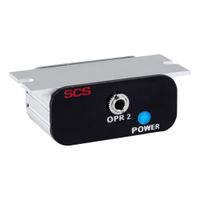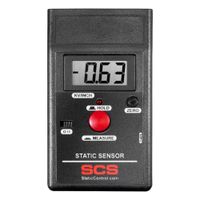Call +(254) 703 030 000 / 751 483 999 / 721 704 777
- Home
- Test Instruments
- Electronic Bench Testing
- Antistatic Safety Equipment
.....Read More
Frequently Asked Questions
What is antistatic safety equipment and why is it important?
Antistatic safety equipment refers to tools and garments designed to prevent the buildup and discharge of static electricity, which can damage sensitive electronic components or ignite flammable substances. This equipment is crucial in environments like electronics manufacturing, laboratories, and areas handling volatile chemicals.
Key components of antistatic safety equipment include:
1. **Antistatic Wrist Straps**: These are worn by personnel to safely ground themselves, preventing static discharge when handling electronic components.
2. **Antistatic Mats**: Placed on workbenches or floors, these mats dissipate static charges from equipment and personnel, providing a grounded surface.
3. **Antistatic Clothing**: Garments such as lab coats, gloves, and footwear made from conductive materials help prevent static buildup on the body.
4. **Ionizers**: These devices neutralize static charges in the air by emitting ions, useful in environments where grounding is impractical.
5. **Antistatic Bags**: Used for storing and transporting electronic components, these bags prevent static buildup and protect contents from electrostatic discharge (ESD).
The importance of antistatic safety equipment lies in its ability to prevent ESD, which can cause immediate or latent damage to electronic components, leading to device failure. In industries dealing with flammable substances, static discharge can ignite vapors, causing fires or explosions. By using antistatic equipment, companies ensure product reliability, reduce costly damages, and maintain a safe working environment.
How do wearable antistatic devices work?
Wearable antistatic devices, such as wrist straps, work by safely discharging static electricity from a person to the ground, preventing electrostatic discharge (ESD) that can damage sensitive electronic components. These devices typically consist of a conductive band, often made of fabric or metal, that is worn around the wrist. The band is connected to a grounding wire, which is then attached to a grounding point, such as a grounded metal surface or a special grounding plug.
The conductive material in the wrist strap ensures that any static charge accumulated on the body is transferred through the wire to the ground. This process is facilitated by the principle of equipotential bonding, which equalizes the electrical potential between the person and the ground, preventing the buildup of static electricity.
The grounding wire often includes a resistor, typically around 1 megohm, which serves as a safety feature. This resistor limits the current flow, protecting the wearer from electrical shock in case of accidental contact with live electrical circuits.
Wearable antistatic devices are crucial in environments where ESD-sensitive components are handled, such as electronics manufacturing, repair, and assembly. By maintaining a continuous path to ground, these devices help prevent sudden discharges that can cause immediate or latent damage to electronic components, ensuring their reliability and longevity.
What are the benefits of using air ionizers in a workspace?
Air ionizers offer several benefits in a workspace:
1. **Improved Air Quality**: Air ionizers release negative ions that attach to airborne particles like dust, pollen, and smoke, causing them to become heavy and fall to the ground. This reduces the number of pollutants in the air, leading to cleaner air quality.
2. **Allergy Relief**: By removing allergens such as pollen, dust mites, and pet dander from the air, ionizers can help reduce allergy symptoms, providing relief to employees who suffer from allergies.
3. **Odor Reduction**: Ionizers can neutralize odors by breaking down odor-causing particles, leading to a fresher-smelling environment. This is particularly beneficial in workspaces with kitchens or high foot traffic.
4. **Enhanced Concentration and Productivity**: Clean air can improve cognitive function and concentration. Negative ions are believed to increase serotonin levels, which can enhance mood and energy levels, potentially boosting productivity.
5. **Reduction of Airborne Germs**: Some studies suggest that ionizers can reduce the presence of airborne bacteria and viruses, contributing to a healthier workspace and potentially reducing the spread of illnesses.
6. **Stress Reduction**: Exposure to negative ions has been associated with reduced stress and anxiety levels, creating a more relaxed and pleasant work environment.
7. **Low Maintenance**: Unlike traditional air purifiers that require regular filter changes, ionizers typically have lower maintenance needs, making them cost-effective over time.
8. **Quiet Operation**: Many ionizers operate quietly, making them suitable for work environments where noise levels need to be minimized.
9. **Energy Efficiency**: Air ionizers generally consume less energy compared to other air purification systems, contributing to lower energy costs.
These benefits collectively contribute to a healthier, more comfortable, and more productive workspace.
How do antistatic table mats protect sensitive electronics?
Antistatic table mats protect sensitive electronics by providing a controlled environment that minimizes the risk of electrostatic discharge (ESD). These mats are made from materials that have conductive or dissipative properties, which help in safely discharging static electricity. Here's how they work:
1. **Static Dissipation**: Antistatic mats are designed to slowly dissipate static charges. They are made from materials that have a controlled resistance, allowing static electricity to flow through them at a safe rate. This prevents sudden discharges that can damage electronic components.
2. **Grounding**: The mats are typically connected to a grounding point. This connection provides a path for static electricity to safely dissipate into the ground, away from sensitive electronic devices. By grounding the mat, any static charge that accumulates on the surface or on the user is neutralized.
3. **Surface Protection**: The mats provide a protective surface that prevents the buildup of static electricity. They are often used in conjunction with other ESD control measures, such as wrist straps and heel grounders, to ensure a comprehensive static-free environment.
4. **Material Composition**: Antistatic mats are usually made from materials like rubber or vinyl, which are treated with antistatic agents. These materials have a high resistance to static buildup and are durable enough to withstand regular use in environments where electronics are handled.
5. **Environmental Control**: By maintaining a static-free workspace, antistatic mats help in reducing the risk of ESD-related failures. This is crucial in environments like electronics manufacturing, repair, and assembly, where even a small static discharge can lead to significant damage or data loss.
Overall, antistatic table mats are an essential component in ESD control programs, ensuring the safety and longevity of sensitive electronic components.
What is the purpose of static shielding bags and films?
Static shielding bags and films are designed to protect electronic components and devices from electrostatic discharge (ESD), which can cause significant damage to sensitive electronic parts. These bags and films are essential in environments where electronic components are handled, stored, or transported, as they prevent the buildup and discharge of static electricity.
The primary purpose of static shielding bags and films is to create a Faraday cage effect around the contents. This effect is achieved through the use of multiple layers of materials, typically including a conductive metal layer, such as aluminum, sandwiched between layers of plastic. The conductive layer dissipates any static charges that come into contact with the bag, preventing them from reaching the components inside.
Static shielding bags and films are used extensively in the electronics industry, particularly for packaging integrated circuits, semiconductors, and other ESD-sensitive devices. They are crucial during the manufacturing, assembly, and shipping processes to ensure that components remain undamaged by static electricity.
These bags and films are available in various forms, including open-top bags, resealable bags, and tubing, to accommodate different packaging needs. They are often marked with an ESD warning symbol to indicate their protective properties.
In summary, static shielding bags and films serve to protect electronic components from electrostatic discharge by providing a conductive barrier that neutralizes static charges. This protection is vital for maintaining the integrity and functionality of electronic devices throughout their lifecycle.
How do antistatic chemicals help in minimizing static discharge?
Antistatic chemicals help minimize static discharge by reducing the buildup of static electricity on surfaces. These chemicals work by increasing the surface conductivity, allowing static charges to dissipate more quickly and preventing the accumulation of charge that can lead to electrostatic discharge (ESD).
When applied to materials, antistatic agents form a thin conductive layer that attracts moisture from the air. This layer reduces the surface resistivity, allowing electrons to move more freely across the surface. By facilitating the movement of electrons, antistatic chemicals help neutralize any charge imbalance, thereby preventing the sudden discharge of static electricity.
Antistatic chemicals can be either topical treatments or incorporated into materials during manufacturing. Topical antistatic agents are applied as sprays, coatings, or wipes and are commonly used on surfaces like floors, carpets, and electronic equipment. These treatments are temporary and may require reapplication over time. In contrast, antistatic additives are mixed into materials like plastics, textiles, or coatings during production, providing long-lasting antistatic properties.
By minimizing static discharge, antistatic chemicals protect sensitive electronic components from damage, reduce the risk of sparks that could ignite flammable substances, and improve safety and performance in environments where static electricity is a concern. They are essential in industries such as electronics manufacturing, pharmaceuticals, and petrochemicals, where controlling static electricity is critical to maintaining product integrity and safety.
How do static sensors and monitors function in detecting static discharge?
Static sensors and monitors function by detecting the presence and magnitude of static electricity in an environment. They typically operate using one or more of the following principles:
1. **Electrostatic Induction**: Static sensors often use electrostatic induction to detect static charges. When a charged object is brought near the sensor, it induces an opposite charge on the sensor's surface. This change in charge is detected and measured, allowing the sensor to determine the presence and magnitude of static electricity.
2. **Capacitive Coupling**: Some static sensors use capacitive coupling to detect static discharge. These sensors measure changes in capacitance caused by the presence of a static charge. As the static charge approaches the sensor, it alters the electric field, which in turn changes the capacitance. This change is detected and used to assess the static charge level.
3. **Field Mill Technology**: Field mill sensors measure the electric field strength in the vicinity of the sensor. They consist of a rotating or vibrating electrode that alternately exposes and shields a sensing electrode from the electric field. The variation in the electric field is measured and used to determine the static charge.
4. **Ionization**: Some monitors use ionization to neutralize static charges. These devices emit ions that attach to charged particles, neutralizing them and preventing static discharge. The effectiveness of ionization is monitored to ensure static levels remain within safe limits.
5. **Threshold Alarms**: Static monitors often include threshold alarms that alert users when static levels exceed safe limits. These alarms can be visual, auditory, or both, providing immediate feedback to prevent potential damage or hazards.
By employing these methods, static sensors and monitors effectively detect and manage static discharge, ensuring safety and preventing damage in sensitive environments.







